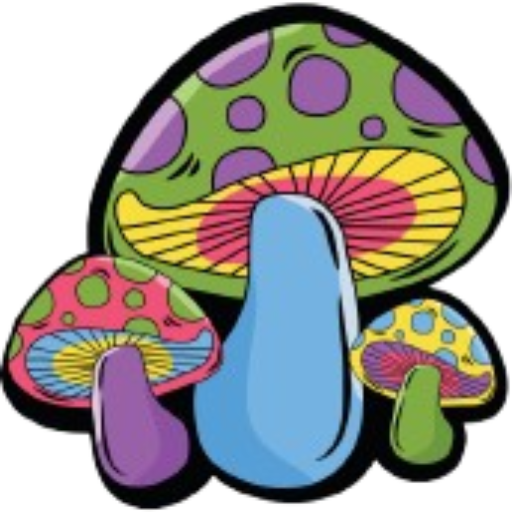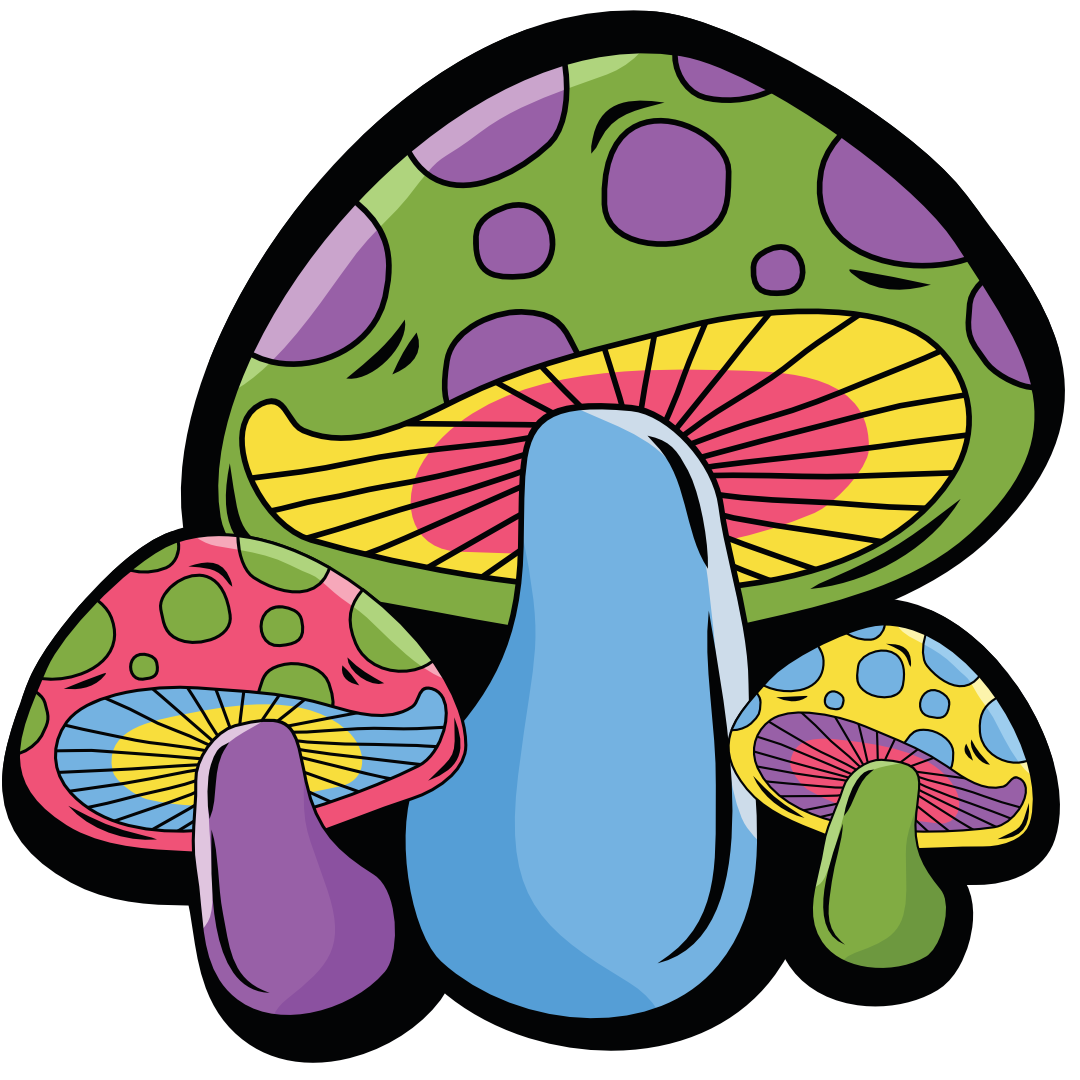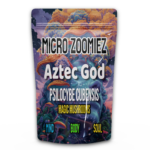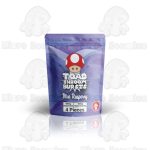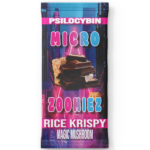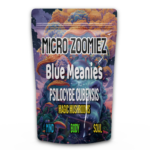Psilocybin, the renowned psychedelic compound found in “magic” mushrooms, was first isolated by Swiss chemist Albert Hofmann in 1958. Hofmann, who is often referred to as the “father of LSD,” was working at the Sandoz pharmaceutical company when he made this groundbreaking discovery.
Psilocybin is a naturally occurring psychedelic prodrug compound that is produced by over 200 species of fungi, including the well-known Psilocybe cubensis, commonly known as “magic mushrooms,” “shrooms,” or “psychedelic mushrooms.” When ingested, psilocybin is rapidly converted by the body into psilocin, the compound responsible for the mind-altering effects associated with these entheogenic fungi.
Hofmann’s work on psilocybin was part of a broader investigation into the potential therapeutic applications of psychedelic compounds, a field that has seen a resurgence of scientific interest in recent years. His landmark discovery in 1958 paved the way for further research and the eventual medicalization of psilocybin-based treatments for various mental health conditions.
Introduction to Psilocybin
Psilocybin is a naturally occurring psychedelic compound found in over 200 species of fungi. Once ingested, it is rapidly metabolized into psilocin, a mind-altering substance with effects similar to other classical psychedelics. This fascinating compound has a rich history, beginning with its initial isolation and identification by Swiss chemist Albert Hofmann and his team at Sandoz Laboratories in 1958, shortly after their groundbreaking discovery of LSD.
What is Psilocybin?
Psilocybin is a psychedelic prodrug, meaning it is converted into the active compound psilocin once it is metabolized in the body. Psilocin is responsible for the hallucinogenic and psychoactive effects often associated with the use of psilocybin-containing mushrooms. These psychedelic compounds can profoundly influence perception, cognition, and emotional experiences, making them the subject of increasing scientific and medical interest.
Brief History of Psilocybin’s Discovery
The history of psilocybin’s discovery can be traced back to the 1950s, when Albert Hofmann, a Swiss chemist at Sandoz Laboratories, first isolated and identified the compound. This breakthrough came shortly after Hofmann’s earlier discovery of the psychedelic properties of lysergic acid diethylamide (LSD), another groundbreaking finding in the field of psychedelic research. Psilocybin’s unique properties and potential therapeutic applications have continued to captivate researchers and clinicians, leading to an ongoing exploration of its effects and possible uses.
“Psilocybin has the potential to revolutionize the way we approach mental health and wellbeing. Its unique properties offer promising avenues for treating a range of conditions, from depression to addiction.”
Ancient Use of Psilocybin Mushrooms
The use of psilocybin mushrooms, or “entheogenic fungi,” has a rich history that stretches back thousands of years. Evidence from ancient cave paintings and rock art suggests that humans have been exploring the psychedelic properties of these remarkable fungi since prehistoric times.
Evidence from Cave Paintings and Rock Art
Imagery found in various cave paintings and rock art from regions like modern-day Algeria, Spain, and Mexico has been interpreted as depicting the use of psilocybin-containing mushrooms. These ancient artworks provide a rare glimpse into the spiritual and ritual practices of our ancestors, who may have used psilocybin mushrooms in their religious ceremonies and shamanistic traditions.
Mesoamerican Cultures and Psilocybin Mushrooms
In Mesoamerican cultures, the psilocybin mushrooms were long revered as sacred, with the Aztec people referring to them as “teonanacatl” or “God’s flesh.” Spanish chroniclers documented the use of these entheogenic fungi in spiritual and divinatory ceremonies by indigenous communities, even as they attempted to suppress and erase this ancient knowledge.
“Psilocybin is an indole-based secondary metabolite produced by numerous species of mushrooms.”
The widespread distribution of psilocybin-containing fungi, as well as the enhanced sensitivity of the human serotonergic system to psychedelics, suggest that the use of these mushrooms has been an integral part of human cultural and spiritual development for millennia.
Albert Hofmann: The “Father” of LSD and Psilocybin
Albert Hofmann, a Swiss chemist, is widely regarded as the “father” of both lysergic acid diethylamide (LSD) and psilocybin. Born on January 11, 1906, in Baden, Switzerland, Hofmann made groundbreaking discoveries that would forever change our understanding of psychedelic substances.
In 1938, while working at Sandoz Laboratories, Hofmann first synthesized LSD by isolating compounds found in the fungus Claviceps purpurea. Five years later, on April 16, 1943, Hofmann accidentally rediscovered the psychedelic effects of LSD, marking a pivotal moment in the history of psychedelics.
“LSD is not a recreational drug, but a sacred drug to help achieve enlightenment.” – Albert Hofmann
Hofmann continued to explore the potential of LSD, deliberately ingesting 250 micrograms of the substance on April 19, 1943, in what is considered the first intentional LSD trip. Throughout his life, he emphasized the substance’s therapeutic and spiritual potential, earning him the title of the “father of LSD.”
Hofmann’s groundbreaking work extended beyond LSD. In 1958, he and his team at Sandoz isolated and synthesized the hallucinogenic compounds psilocybin and psilocin, found in the Psilocybe mexicana mushroom. This discovery cemented Hofmann’s status as a pioneer in the field of psychedelics, earning him the moniker of the “father of psilocybin” as well.
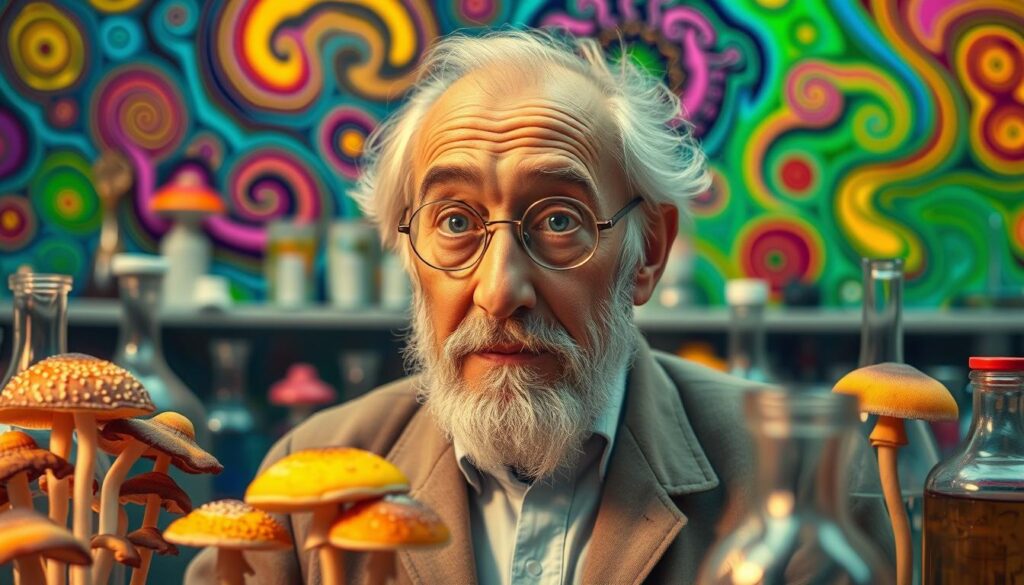
Hofmann’s contributions to the understanding of psychedelics were not limited to his scientific work. He authored numerous books, including the influential “LSD: Mein Sorgenkind (LSD: My Problem Child),” and continued to advocate for the responsible use of these substances throughout his life. Hofmann passed away on April 29, 2008, at the age of 102, leaving behind a legacy as one of the most influential figures in the history of psychedelic research and exploration.
Psilocybin Cubensis: The Most Widespread Psilocybin Mushroom
Among the diverse array of psilocybin-containing mushroom species, Psilocybe cubensis stands out as the most widespread and commonly cultivated variety. This iconic “magic mushroom” is renowned for its distinctive features and relatively straightforward cultivation process, making it a popular choice for both researchers and amateur enthusiasts alike.
Identifying and Growing Psilocybe Cubensis
Psilocybe cubensis can be identified by its golden-brown cap, thin white stem, and the bluish hues that appear when the mushroom is bruised. Cultivating Psilocybe cubensis is relatively simple compared to other psilocybin-containing species, making it a preferred choice for those interested in mushroom cultivation. With the right growing conditions, temperature, and moisture levels, Psilocybe cubensis can thrive and produce bountiful harvests.
Legal Status of Psilocybin Cubensis in Canada
In Canada, the possession and cultivation of Psilocybe cubensis and other psilocybin-containing mushrooms is currently illegal. The substances are classified as Schedule III controlled substances under the Controlled Drugs and Substances Act, meaning that unauthorized production, distribution, or possession can result in criminal charges and penalties. While research into the therapeutic potential of psilocybin continues, the legal status of Psilocybe cubensis and other magic mushrooms remains a complex and evolving issue in Canada.
Therapeutic Potential of Psilocybin
In recent years, there has been renewed interest in exploring the therapeutic potential of psilocybin, the active compound found in certain species of mushrooms. Several studies have examined the use of psilocybin for the treatment of various mental health conditions, including depression, anxiety, and addiction, with promising results.
Recent Studies on Psilocybin for Mental Health
Researchers have been investigating psilocybin’s ability to facilitate profound personal insights and experiences that can lead to lasting positive changes in mental health and well-being. For example, a 2014 proof-of-concept study demonstrated the potential of psilocybin-assisted treatment for alcohol dependence, while a 2015 study discussed the use of psychedelic drugs as an alternative treatment approach for problematic drug and alcohol addiction.
Furthermore, studies have explored the use of psilocybin in the treatment of obsessive-compulsive disorder, anxiety in patients with advanced-stage cancer, and depression and anxiety in cancer patients. These studies have reported promising results, such as significant and sustained decreases in symptoms, as well as improved end-of-life experiences for those facing terminal illness.
“Psilocybin-assisted psychotherapy has the potential to aid in the treatment of a variety of mental health conditions, offering a novel approach to addressing complex and often challenging issues.”
Interestingly, a 2018 study also indicated that psilocybin treatment may increase nature relatedness and decrease authoritarian political views in individuals with treatment-resistant depression. This suggests that psilocybin-assisted therapy could have broader implications for personal growth and societal well-being.
As research in this field continues to evolve, the therapeutic potential of psilocybin in the context of psychedelic medicine and mental health treatment remains a promising area of exploration.
Cultural Significance and Entheogenic Use
Psilocybin-containing mushrooms have held profound cultural and religious importance for many indigenous cultures around the world. These psilocybin mushrooms have been revered as “sacred” or “divine” substances, used in spiritual and divinatory ceremonies to facilitate profound mystical experiences and insights. The use of psilocybin and other psychedelics as entheogenic agents, substances that induce spiritual experiences, continues to be an integral aspect of certain cultural and religious practices.
Archaeological evidence suggests that the use of psilocybin mushrooms dates back thousands of years, with precolonial use documented among civilizations like the Maya, Mixtec, and Aztec in modern-day Mexico. Indigenous peoples’ use of these fungi was recorded as early as the 16th century by Spanish chroniclers, though their practices were later suppressed by colonial authorities.
“At least 20 confirmed recognized species of Psilocybe mushrooms are found in Mexico, the country richest in psilocybin fungi.”
Today, the cultural significance and entheogenic use of psilocybin-containing mushrooms continues to be an important aspect of many indigenous communities, serving as a means of spiritual exploration, community cohesion, and connection with the natural world.
The widespread availability of these fungi across diverse ecological zones, as well as their potential influence on human evolution and cognition, underscores the profound impact psilocybin mushrooms have had on the spiritual and cultural development of our species.
Risks and Potential Side Effects
While psilocybin, the active compound in magic mushrooms, is generally considered a relatively safe psychedelic substance, it can still carry certain risks and potential side effects. These may include nausea, anxiety, panic attacks, and in rare cases, psychosis or other adverse reactions.
Safe Use and Harm Reduction Practices
Proper dosage, set and setting, and harm reduction practices are essential for the safe use of psilocybin and other psychedelics. Studies have shown that users who employ harm reduction techniques, such as having a sober guide, are more likely to transform challenging experiences into valuable ones. Additionally, the potency of psilocybin can vary significantly, so it’s crucial to start with low doses and gradually increase as needed.
According to research, intravenous injection of psilocybin has led to cases requiring emergency medical treatment, highlighting the importance of responsible and informed use. Seizures, transient expressive aphasia, and other adverse effects have also been reported in some instances of hallucinogenic mushroom poisoning.
While psilocybin is not considered addictive, individuals may experience psychological withdrawal symptoms and difficulty readjusting to reality after several days of use. Therefore, it’s essential to approach psilocybin with caution and adhere to harm reduction practices to ensure a safe and positive experience.
“Psychedelic harm reduction and integration practices have been proposed in clinical settings, following a transtheoretical model, where users reported a positive impact on reducing harm associated with psychedelic experiences.”
Overall, psilocybin can be a powerful tool for personal growth and exploration, but it’s crucial to approach it with care and respect. By understanding the potential risks and side effects, and implementing safe and responsible practices, individuals can minimize the harm and maximize the benefits of this fascinating compound.
Legal Status and Regulations
Psilocybin and other psilocybin-containing mushrooms have been classified as illegal substances in most countries around the world. They are listed as Schedule I controlled substances under the 1971 United Nations Convention on Psychotropic Substances, which has led to their psilocybin legality being restricted and prohibited in many jurisdictions, including Canada.
UN Convention on Psychotropic Substances
The 1971 UN Convention on Psychotropic Substances has played a significant role in shaping drug policy and international regulations around psilocybin and other psychoactive substances. This international treaty has led to the criminalization of psilocybin in Canada and many other countries, despite growing evidence of its potential therapeutic benefits.
“Psilocybin and psilocin, the active chemicals in magic mushrooms, are controlled internationally under the United Nations Drug Control Conventions and in Canada under the Controlled Drugs and Substances Act (CDSA).”
While the legal landscape surrounding psilocybin is slowly shifting in some parts of the world, the substance remains a controlled substance in Canada, with limited pathways for legal access. As research continues to explore the therapeutic potential of psilocybin, it will be interesting to see how the legal and regulatory frameworks evolve in the years to come.
Modern Research and Future Prospects
Despite the legal restrictions, there has been a resurgence of scientific interest and psilocybin research in recent decades. Researchers are exploring the use of psilocybin, the active compound in “magic mushrooms,” for the treatment of various mental health conditions, as well as its potential to facilitate personal growth and well-being. The therapeutic potential of psychedelic medicine, including psilocybin, has garnered significant attention globally.
Studies conducted at institutions like Imperial College London, Johns Hopkins University, and New York University have shown promising results in using psilocybin-assisted therapy for conditions like post-traumatic stress disorder (PTSD), anxiety, depression, and addiction. A single dose of psilocybin can lead to sustained remission of depression for months or even years, and psilocybin-assisted psychotherapy has demonstrated mood improvement, antidepressant effects, and stress relief lasting more than six months.
As attitudes and policies around psychedelics continue to evolve, the future prospects for the medical and therapeutic use of psilocybin appear promising. The FDA has granted psilocybin “breakthrough” status, and Health Canada has approved research trials with high safety standards. This shift in drug policy reform suggests a paradigm shift in mental health treatment, offering hope for Canadians and patients worldwide.
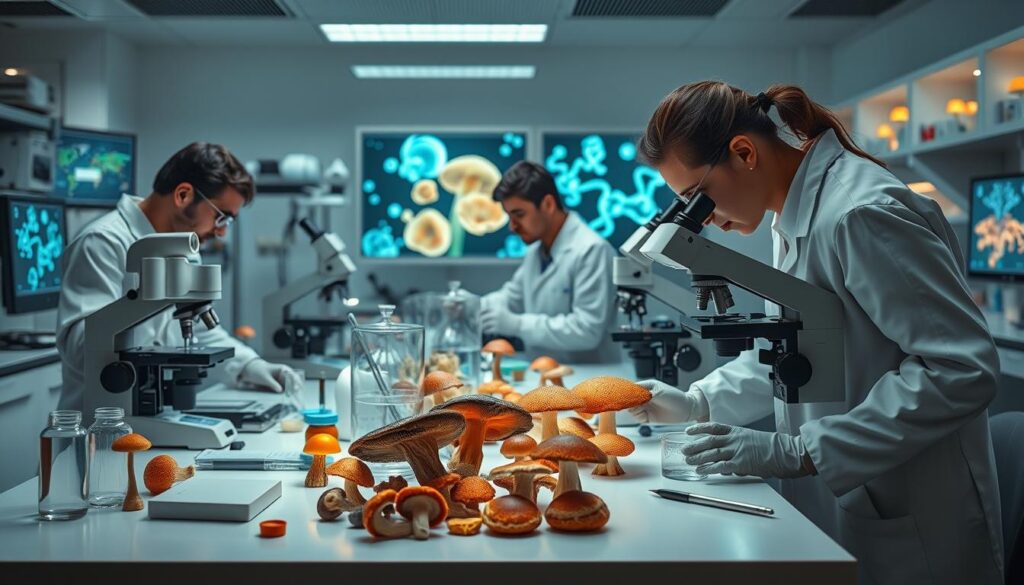
While the research on psilocybin is still in its early stages, the results are highly encouraging. As more studies are conducted and the regulatory landscape continues to evolve, the potential of psilocybin as a psychedelic medicine for a range of mental health conditions is likely to become increasingly recognized and accepted.
Conclusion
The journey of psilocybin, the active compound found in so-called “magic mushrooms,” has been truly remarkable. From its ancient use in spiritual and religious ceremonies by indigenous cultures to its modern-day potential as a therapeutic agent, psilocybin continues to capture the interest and imagination of researchers, clinicians, and the general public alike.
As our understanding of psilocybin deepens, the future prospects for its safe and responsible use in various contexts appear increasingly promising. High-quality clinical trials have demonstrated the efficacy of psilocybin in reducing depression and anxiety, with the compound even being designated a breakthrough therapy for depression treatment by the FDA. Moreover, initial research suggests psilocybin may help reduce problematic alcohol and tobacco use, underscoring its potential in addiction medicine.
Psilocybin’s unique mechanism of action, allowing for its administration at isolated intervals for lasting effects, combined with its low toxicity and risk of overuse, make it a compelling subject for further exploration. As researchers continue to investigate the therapeutic potential of psilocybin in treating conditions such as depression, addiction, and end-of-life mood disorders, the future holds great promise for the responsible and ethical use of this remarkable compound.
